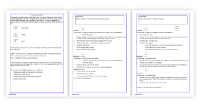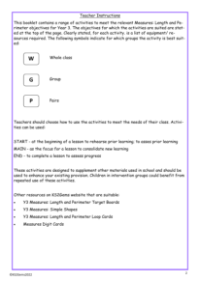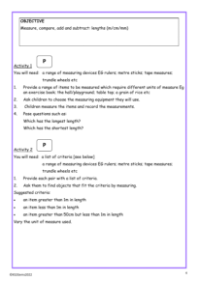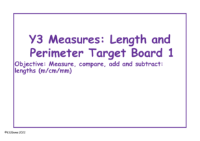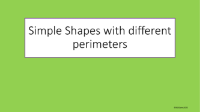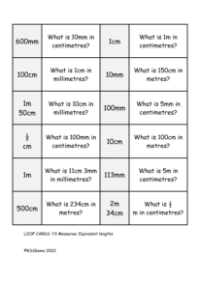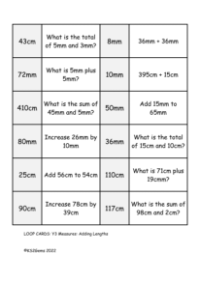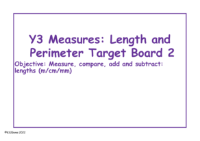Measure perimeter worksheet

Maths Resource Description
In a worksheet designed for Key Stage 2 pupils, the concept of measuring perimeter is explored through hands-on activities. Activity 1 involves pairs of students working with a variety of 2D shapes to identify and trace the perimeter. One child uses their finger to trace the perimeter while the other observes to ensure accuracy. They then switch roles and discuss how they determined where to start and finish, how to avoid recounting edges, and how to ensure all sides have been accounted for. This exercise not only reinforces the concept of perimeter but also encourages teamwork and communication.
Activity 2 shifts the focus to practical application using 1cm squared paper. Children are tasked with drawing a square with 1cm sides and calculating its perimeter. They are then challenged to create different arrangements using four 1cm squares, exploring how the perimeter changes with each new shape. In Activity 3, students are encouraged to draw as many pentominoes or hexominoes as they can, given a specific perimeter, and then swap their drawings with a partner for verification. If available, variations of the activity include using pinboards and elastic bands for a tactile learning experience. The objective of these exercises is to measure the perimeter of simple 2D shapes, enhancing the students' understanding and ability to apply measurement skills in various contexts.
Finally, Activity 4 introduces a variety of measuring tools such as rulers, metre sticks, tape measures, and trundle wheels. Students are provided with items of different sizes, from an exercise book to the school hall or playground, and are asked to measure and record the perimeters. This activity ensures that children understand how to select the appropriate unit of measurement for different items, including rectilinear shapes. After measuring, they swap findings with a partner to check each other's calculations, promoting accuracy and peer learning. The overarching objective remains consistent: to measure the perimeter of simple 2D shapes, solidifying this fundamental aspect of geometry.
